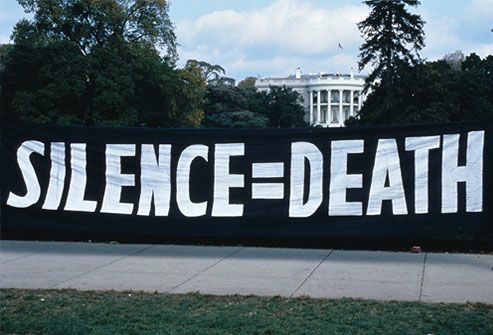
“Qui tacet consentire videtur” ~ He who is silent is taken to agree.
I sit facing the young German neurologist, across a small table in a theater in Hamburg, Germany. I’m here giving one-on-one talks called “The Unenhanced: What Has Happened to Those Deemed ‘Unfit’,” about my research on Aktion T4, the Nazi “euthanasia” program to exterminate the disabled.
“I’m afraid of what you’re going to tell me,” the neurologist says.
I’m not surprised. I’ve heard similar things before. But this time is different — the young man sitting across from me is a doctor. Aktion T4 could not have happened without the willing participation of German doctors.
I have a personal stake in making sure this history is remembered. In 1960, I was born missing bones in both legs. At the time, some thought I should not be allowed to live. Thankfully, my parents were not among them.
I first discovered that people with disabilities were sterilized and killed by the Nazis when I was a teenager, watching the TV mini-series “Holocaust” in 1978. But it would be years before I understood the connections between the killing of the disabled and the killing of Jews and other “undesirables,” all of whom were, in one way or another, deemed “unfit.”
The neurologist does not know much about what I’m telling him. While he does know that approximately 300,000 disabled people were killed in T4 and its aftermath, he doesn’t know about the direct connection between T4 and the Holocaust. He doesn’t know that it was at Brandenburg, the first T4 site, where methods of mass killing were tested, that the first victims of Nazi mass killings were the disabled, and that its personnel went on to establish and run the extermination camps at Treblinka, Belzec and Sobibor.
Three years earlier, when I first arrived in Germany, I was consistently confronted with the treatment of those with disabilities under the Third Reich. But I soon realized I had to go back even farther. In the 1920s, the disabled were mistreated, sterilized, experimented on and killed in some German psychiatric institutions. In 1920, the psychiatrist Alfred Hoche and the jurist Karl Binding published their treatise, “Permitting the Destruction of Unworthy Life,” which became the blueprint for the exterminations of the disabled carried out by the Third Reich.
In Dr. Ewald Melzer’s 1923 survey of the parents of the disabled children in his care, they were asked: “Would you agree definitely to a painless shortcut of your child’s life, after it is determined by experts that it is incurably stupid?” The results, which surprised Melzer, were published in 1925: 73 percent responded they were willing to have their children killed if they weren’t told about it.
I am also Jewish. At the Karl Bonhoeffer psychiatric hospital in the Berlin suburb of Wittenau, where the exhibition “A Double Stigma: The Fate of Jewish Psychiatric Patients” was held, I learned about, as the exhibition title suggests, how Jewish patients were doubly stigmatized by being separated from other patients, denied pastoral care, and were cared for not at the expense of the Reich but by Jewish organizations. Jewish patients were singled out for early extermination; by December 1942, the destruction of the Jewish patient population at Wittenau was complete.
It is only at the end of my talk with the neurologist that I notice he wears a hearing aid. I want to ask if he knows about “100 Percent,” the film produced by deaf Germans to show they could assimilate and be productive citizens who worked. Did he know the hereditary deaf were singled out not only by the German authorities but also by those with acquired deafness who tried to save themselves? Too often, even those of us with disabilities do not know our own history.
Not many people know about disability history in the United States. They do not know that in the United States in 1927, Justice Oliver Wendell Holmes wrote that “three generations of imbeciles are enough” as part of his opinion in Buck v. Bell, in which the Supreme Court ruled that compulsory sterilization of the “unfit” was constitutional. This decision has never been expressly overturned.
Many Americans still do not know about the so-called “ugly laws,” which in many states, beginning in the late 1860s, deemed it illegal for persons who were “unsightly or unseemly” to appear in public. The last of these laws was not repealed until 1974.
Why is it important to know this history? We often say what happened in Nazi Germany couldn’t happen here. But some of it, like the mistreatment and sterilization of the disabled, did happen here.
A reading of Hoche and Binding’s “Permitting the Destruction of Unworthy Life” shows the similarity between what they said and what exponents of practical ethics, such as Peter Singer, say about the disabled today. As recently as 2015, Singer, talking with the radio host Aaron Klein on his show, said, “I don’t want my health insurance premiums to be higher so that infants who can experience zero quality of life can have expensive treatments.”
These philosophers talk about the drain on “resources” caused by lives lived with a disability, which eerily echoes what Hoche and Binding wrote about the “financial and moral burden” on “a person’s family, hospital, and state” caused by what they deem lives “unworthy of living.”
Experts point out the recent Republican health care proposals would strip Medicaid funding that helps the elderly, the poor and the disabled live healthier and more dignified lives. A recent New York Times article quoted the Rev. Susan Flanders, a retired Episcopal priest, as saying: “What we’re paying for is something that many people wouldn’t want if they had a choice. It’s hundreds of dollars each day that could go towards their grandchildren’s education or care for the people who could get well.”
In the article, Flanders, whose father had Alzheimer’s, is described as “utterly unafraid to mix money into the conversation about the meaning of life when the mind deteriorates.” Practical ethicists are similarly unafraid to do this. As were the Nazis. Third Reich school textbooks included arithmetic problems on how much it would cost to care for a person with a disability for a lifetime.
Three years ago, I was the only visitor at a museum dedicated to the history of the Reinickendorf area of Berlin. The museum building was once part of Wiesengrund, which, in 1941, housed the “wards for expert care” of the Municipal Hospital for Children.
Down a hall with fluorescent lighting, in a white-walled room, were 30 wooden cribs. On each of the cribs was a history of a child, some as young as a few months old. This was the room in which these infants and children were experimented on and killed: the 30-bed Ward 3, the “ward for expert care” at Wiesengrund.
My heart raced; my breath shortened. I couldn’t stay in that room for long. The room evoked the first four weeks of my own life spent in an incubator. Nobody knew if I would live or die.
What kind of society do we want to be? Those of us who live with disabilities are at the forefront of the larger discussion of what constitutes a valued life. What is a life worth living? Too often, the lives of those of us who live with disabilities are not valued, and feared. At the root of this fear is misunderstanding, misrepresentation, and a lack of knowledge of disability history and, thus, disabled lives.
Correction:

No responses yet